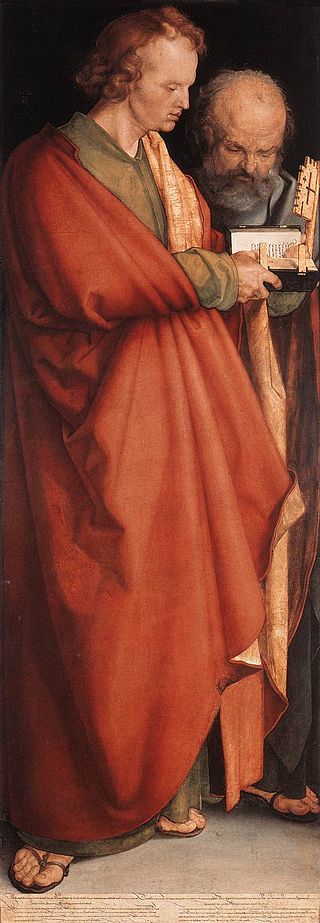by Fr. John A. Hardon, S.J.
St. John’s Gospel is unique. Not only does it contain many events and discourses not present in the Synoptics, but its whole approach to Christ is decisively different.

“This is the disciple who is bearing witness to these things, and who has written these things; and we know that his testimony is true.” (John 21:24)
John the Evangelist was certainly familiar with the first three Gospels. And thus one of his motives for adding his own account of Christ’s life was to supplement what the others had written. But, on his own testimony, the main reason was to show that Christ was, indeed, the natural Son of God, who proved His claim to oneness with the Father by working outstanding miracles, including the raising of Lazarus from the grave. Only John records this event.
Early Christian writers like Sts. Irenaeus and Clement of Alexandria testify that many bishops and Christian communities begged John to write another Gospel. They urged him to bring out the fact of Christ’s Divinity and leave a record of his own spiritual understanding of the Savior.
In keeping with this purpose, the fourth Gospel gives us the longest extant discourses of Jesus about His relation to the Father and the Holy Spirit. It makes clear who is the heart of the Christian religion, namely that Jesus is true God in human flesh, and that the most fundamental truth of Christianity is faith in Jesus Christ as the eternal Son of the eternal Father.
We know from history that Christ’s Divinity was being challenged by some who still called themselves Christians. Not surprisingly, therefore, John’s first conclusion of the Gospel declares, “There were many other signs that Jesus worked and the disciples saw, but they are not recorded in this book. These are recorded so that you may believe that Jesus is the Christ, the Son of God, and that believing this you may have life through His name” (Jn 20:30-31).
Always to be kept in mind is the fact that, by the time John wrote his Gospel, the Church had spread far and wide. Historians tell us that by the end of the first century, there were no less than one hundred dioceses, with bishops at their head, throughout the Mediterranean world. Moreover, John himself had experienced the influence of the Spirit of Christ at work in the Church, and in his own mind and heart. All of these would give him a depth of understanding of the Savior and a penetration into the mysteries He revealed that only “the beloved disciple” could provide.
One feature of John’s Gospel that deserves at least brief attention is its double ending, with Chapter 20, and again with Chapter 21. The centerpiece of the second ending is Christ’s conferral of the primacy on Peter, as He had promised to do in the Gospel of Matthew (16:13-20). We know that already in the first century, Peter and his successors exercised their authority over the churches established by the Apostles. John’s account of Peter’s receiving authority to “feed” the faithful with revealed truth and to “look after” the sheep of Christ’s flock, firmly established the supreme jurisdiction of the Bishop of Rome. Thus the right of the Popes to teach and govern the universal Church is an article of faith based on the revealed word of God, as recorded in the final chapter of the fourth Gospel.
